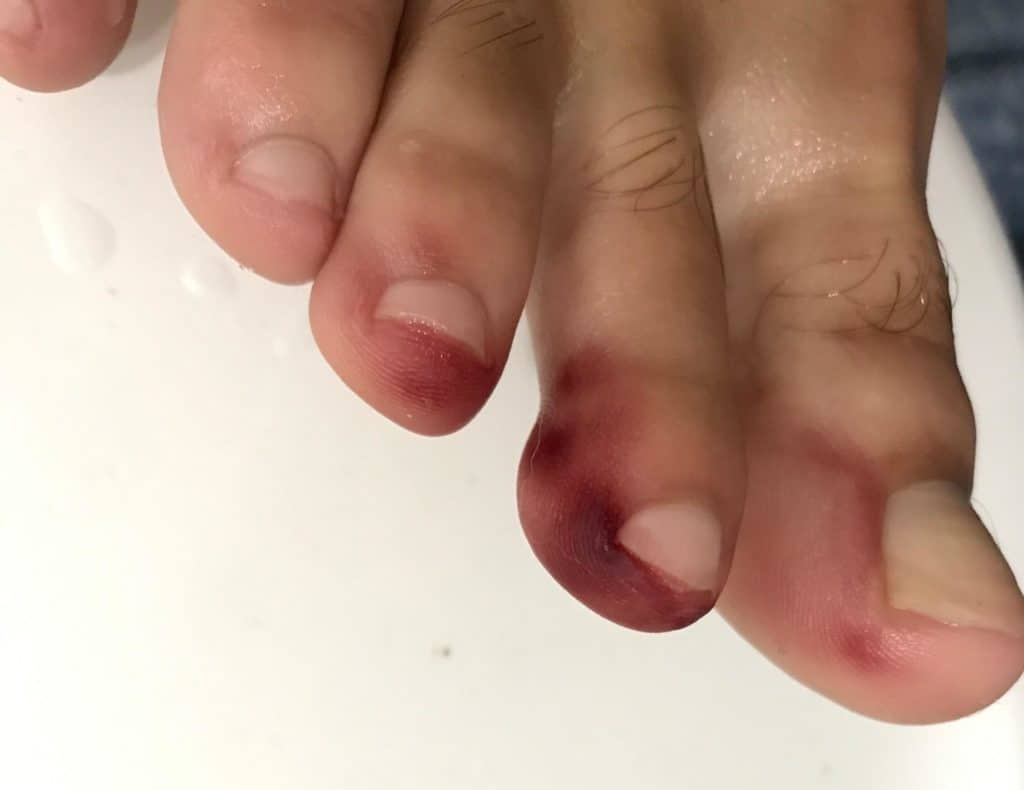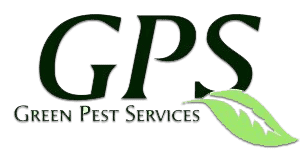Centipedes and Millipedes in Florida
There are 3 species of Millipede common throughout Florida and particularly Florida’s southeast coast.
- Yellow Banded Millipede (Anadenobolus monilicornis)
- Red Rusty Millipede (Trigoniulus corallinus)
- Greenhouse Millipede (Oxidus gracilis)
There is only one species of Centipede in Florida.
- Florida Blue Centipede (Hemiscolopendra marginata)
Yellow Banded Millipede
Early in their life cycle, Yellow Banded Millipedes have brighter, more defined yellow bands. As they age, the yellow tends to become more greyish and harder to distinguish from their primary color.
Yellow Banded Millipede – The most common of these pests in Florida is the Yellow Banded Millipede. These are often found curled up dead in homes and crawling up the outside walls of structures.
Though moderately difficult to control, a regular pest control service should reduce or exterminate the millipede population around a home or building. A one-off service is unlikely to produce satisfactory results for more than 1-2 months

Rusty Millipede
The Rusty Millipede is also common in Florida, though much less of a problem in-doors than its yellow-banded cousin. Like all millipedes, it feeds on decaying plant matter and prefers moist shady habitats. Native to southeast Asia, their status as a pest in Florida may grow as they become better established.

Greenhouse Millipede
The Greenhouse Millipede is very common in Florida. Nearly anyone who maintains a garden or has so much as planted a tree in the Southeast United States has likely encountered these small (less than an inch long) millipedes. Only about an inch long, they are essentially harmless, and may actually be beneficial in helping to aerate the soil and breakdown wastes, returning nutrients to the soil.

Florida Blue Centipede
The Florida Blue centipede can range from greyish blue to orange in color
The Florida Blue Centipede is likely the only true centipede native to Florida. Unlike millipedes, centipedes are aggressive carnivores that eat insects, worms, snails, – essentially any other creature small enough for them to overpower and consume. They are nocturnal and prefer dark, moist areas.

Are Millipedes Poisonous?
I’ve heard of something called Millipede Burn
Most Millipedes in Florida are generally not dangerous. Their primary mechanism of defense is to curl up into a tight ball, protecting their legs and softer underbelly. They do however have the ability to produce mild toxins meant to deter predators. Your dog would be unlikely to consume a millipede due to its fowl taste, but in the event, serious medical consequences appear to be rare. You may, however, want to seek the advice of a veterinarian if you believe your pet has consumed a millipede.
If a crushed millipede should come in contact with your skin – such as stepping on one barefoot – you may become affected by something called “Millipede Burn”. This is essentially a chemical burn caused by toxins released from the crushed millipede. The severity of this condition will depend on the species of millipede and the duration of contact.
Yellow Banded Millipedes most common in South Florida have the ability to cause this skin condition, though it is relatively mild compared to species found in other parts of the world.
Children are most likely to be affected by this condition because of time spent outside and often barefoot. Children may also be particularly vulnerable because of more sensitive skin and because children may be more likely to ignore the substance at first instead of immediately washing the affected area.
The acidic chemicals contained within the millipede may also stain the skin or induce reactions that cause discoloration. Nevertheless, with the species common in Florida this is a relatively mild condition that typically passes quickly. As with anything else, allergic reactions are always possible.

Do Millipedes & Centipedes Bite?
None of the Millipedes commonly found in Florida bite. The Florida Blue Centipede can and will bite, though generally only when threatened or being handled.
Do Millipedes & Centipedes live in the House?
Centipedes and Millipedes generally do not live inside homes because their food sources are outside and they require high levels of moisture to survive. That said, because they live on or below ground, heavy rains can flood them out of their living space and cause them to enter homes seeking higher ground.
Are Centipedes Poisonous?
Unlike millipedes, centipedes do have a venomous bite. Though not generally considered a serious threat to human health, a centipede’s poisonous bite is painful. Children, the elderly, or anyone experiencing an allergic reaction should consult a physician if they have experienced a centipede bite.
Are Millipedes & Centipedes dangerous to Dogs & Cats?
Centipedes and Millipedes present essentially the same, very mild, a threat to the health of pets that they do to humans. There is, however, the increased chance that a dog or cat may eat one of these arthropods. These animals natural defense mechanisms stand a good chance of deterring pets from eating them. If your pet does consume a millipede or centipede, watch for signs of distress in your pet and contact a veterinarian.

Tips on how to get rid of Millipedes & Centipedes in Florida.
Millipedes survive and thrive by feeding on decaying plant matter. Centipedes hunting in similarly moist areas. Opting for lava rock or rubber mulch as opposed to wood can make some difference in their population around a home. Removing dead leaves and branches the accumulate underneath ornamental plants can also help, while keeping hedges and trees well-trimmed allow sunlight to reach the soil will also make conditions less favorable.
Part and parcel to the decaying plant matter millipedes need to survive is high levels of moisture. Dry plant material does not make for a good resource for these bugs. While we cannot control the weather, homeowners certainly can control their sprinkler systems. A common mistake is allowing sprinklers to run on the same schedule throughout the year. Spring in Florida can be both dry and hot requiring a fair amount of water to keep lawns healthy. The summer months are when we receive the majority of our annual rainfall during which time irrigation should be scaled back. Too much moisture will exacerbate already favorably conditions for the pest. Even further, flooding of mulch beds can flush out bugs living there, forcing millipedes and centipedes into homes.
Millipedes have become an increasingly common problem in Port St Lucie and the Treasure Coast. The varieties most often found in St Lucie and Martin County tend to vary in color from black and brown to red. Though they can secrete a foul odor as a defense mechanism and can stain clothing if crushed, these worm-like insects are relatively harmless. Homeowners will often find them curled up dead inside homes or on the garage floor during South Florida’s rainy summer months. This is not by coincidence. All insects are more active and breed more quickly in the warm and humid summer months, millipedes, in particular, thrive during this time because they primarily feed on decaying plant matter. This is a key point of millipede behavior that provides clues for the homeowner looking to learn how to get rid of millipedes.

Though centipedes do not typically require an exterminator, millipedes often do. Port St Lucie and Stuart and Palm City, in particular, have seen an influx of these pests in recent years. Pest control companies in Port St Lucie can get rid of difficult to control bugs, especially those that require spraying on the entire yard and hard to reach places. Green Pest Services, LLC has experience exterminating these hard to eradicate pests and can do so using natural and organic products suitable for the chemically sensitive. If you would like a free quote on a guaranteed pest control service from a local pest control provider near you, contact Green Pest Services at 772-528-5839.
